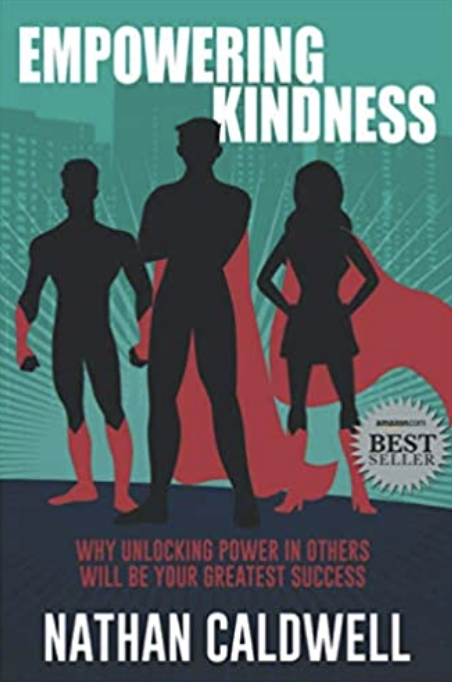
This article was developed from an episode of “Time Out For Anesthesia” with Nathan Caldwell, Amazon Best-Selling Author of Empowering Kindness: Why Unlocking Power In Others Will Be Your Greatest Success. You can watch or listen to the original interview via the links at the bottom of this page, and you can visit his website at www.EmpoweringKindness.com.
Nathan Caldwell’s amazon best-selling title, “Empowering Kindness” is intentionally a double entendre. Empowering kindness, on one hand, means that you want to give your people the authority, the autonomy, the ability to be kind, because then they will do amazing things. But the concept itself is empowering. When you are kind, you are empowering others. The book entails several studies that show that we perform at our optimal level when we are in an environment of kindness. Medical studies even show that our immune system levels are boosted by even just seeing someone else be kind to someone. We’re definitely designed to be kind, we just need to make sure that we are following through with it—and that requires work and strength.
Let’s dive in a little bit more deeply. What happens when mistakes are made that need correction? Often, we see that need in opposition to kindness. Sadly, the idea of kindness typically gets tossed by the wayside when things go afoul. Blame is placed, voices raise, anger runs the conversation. And listen—every once in a while, an employee is going to mess up, maybe even foul up royally. How does one, in that moment, continue to employ the concepts of kindness?
Let’s start with a quote from Brené Brown: “Clear is kind. Unclear is unkind.”
An option that some leaders might take is to avoid the situation altogether, which would, indeed, be nice to the employee. But here’s the rub: Kindness isn’t just about niceness. Kindness is about incorporating strength to benefit others, and at times that may actually require very difficult conversations. But when that situation does arrive, the first idea to be clear about is this: the mistaken action does not define the employee. The two must be disassociated. After all—let’s be honest— that employee has not been 100% mess-up. There have there been times when that employee has done a great job. Make that idea clear in your mind and out loud to the employee, and then you can get to the harder parts of the conversation without destroying the person on the other side of it. “You have historically done great work, and what I appreciate about you most is ______. Now, the work that was done here was a mistake. Let’s take a look at it to understand how it happened so we can avoid the same thing in the future.”
A good, recent real-world example of a huge mistake is one that comes from the world of Barbara Corcoran, whose company nearly lost $400,000 to a scammer. By creating a fake email account with what appeared to be Corcoran’s assistant’s email address (one letter had been changed), the scammer was able to instruct Corcoran’s bookkeeper to pay a false invoice for property in Europe. So what happens to the employees involved? Do you need to start firings immediately? Do you need to show outright anger and belittle the employee? No. Remember—they were tricked into this. Does some of the responsibility fall on the employee? Sure it does, but the idea is still the same. Take a look at the mistake. How did it happen? How can we avoid it in the future? How can the company partner with that employee to do some detective work so that everyone can learn from that mistake and make sure it doesn’t happen moving forward?
Otherwise, what is the good of losing your temper or showing animated disdain for the employee? What are the anticipated outcomes from the meeting you’ll have with them? Is it that you want that person to feel terrible about himself or herself? That won’t be hard to do, but what good will come from it other than perhaps satisfying your own ego? So often this kind of meeting is driven and measured only by how angry the supervisor is.
On the other hand, if we start by believing that people are good and they want to do good things, we are able to separate the mistake from the person. Then we can correct actions rather than belittle people. The result? The person is empowered with not only the tools they have to improve, but also with the knowledge that they work for a company that believes in them and supports them. With those tools in hand, employees will accomplish great things with a much higher loyalty to the company.
Check out Empowering Kindness for yourself:




